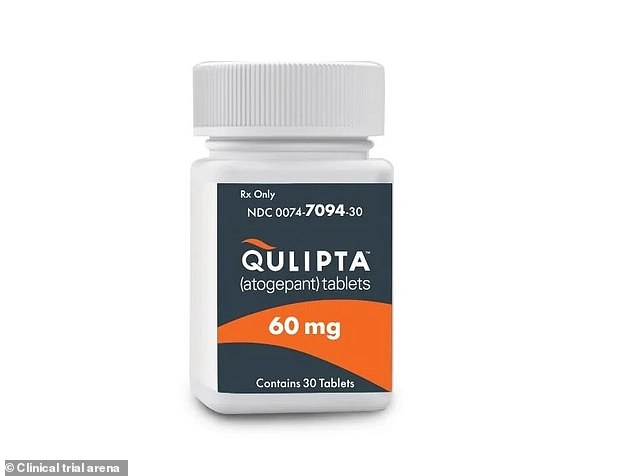<!–
<!–
<!– <!–
<!–
<!–
<!–
A once-a-day pill could transform the lives of migraine sufferers after it was given the green light for use on the NHS.
The National Institute for Health and Care Excellence (NICE) has recommended a treatment that can halve the number of paralyzing attacks.
Atogepant will be an option for people who experience at least four migraine days a month and who have tried at least three other treatments without success.
The pill, sold under the brand names Aquipta and Qulipta and manufactured by pharmaceutical company AbbVie, could be a boon for around 170,000 sufferers in England.

Atogepant will be an option for people who suffer at least four days of migraine per month and who have tried at least three other treatments without success
It works by blocking the receptor for a protein found in the sensory nerves of the head and neck, known as calcitonin gene-related peptide (CGRP). This protein causes blood vessels to dilate, which can cause inflammation and migraine.
Studies show that the drug reduces the number of migraine days per month by half.
The list price is £463.38 for 28 tablets, but the NHS has been offered the treatment at a confidential discount price.
Helen Knight, NICE’s director of medicines evaluation, said: “Currently, the most effective options for people with chronic migraines who have already tried three preventative treatments are medicines that need to be injected.”
“The committee heard from patient experts that some people cannot receive injectable treatments, for example because they have an allergy or phobia of needles.”
He said patients with chronic migraines (occurring more than 15 days a month) “would appreciate an oral treatment.”
Meanwhile, Aquipta would also offer “more options” for people who suffer from episodic migraines, which occur fewer than 15 days a month.
Professor Peter Goadsby, of King’s College Hospital, who led the discovery of CGRP in the 1980s, said it could be “life-changing” for sufferers.
According to The Migraine Trust, around 10 million adults in the UK live with the condition.
The charity’s chief executive, Rob Music, said: “A migraine attack can be incredibly debilitating.
‘Symptoms may include severe headache, loss or changes in senses, and lack of ability to carry out daily life.
“It is positive to see even more therapies emerging for people with migraine, as many still rely on treatments developed for other conditions.
“We now need to ensure that access is rapid, so that migraine patients can benefit from them as soon as possible.”
Health Minister Andrew Stephenson said: “Migraines affect millions of people in this country and this new treatment will help prevent recurrent migraine attacks when other medications have failed.”
“It will enable more people whose daily lives are affected by this painful and debilitating disease to control their migraines more effectively and live their lives to the fullest.”
The final draft of NICE guidance for England comes after the Scottish Medicines Consortium (SMC) recommended the use of Aquipta in Scotland in October last year.
Rachael Millward, medical director at AbbVie UK, said the treatment has the potential to “improve the quality of life” for sufferers.
NICE recommends stopping Aquipta after 12 weeks if chronic migraines are not reduced by at least 30 percent and episodic migraines by at least 50 percent.
If there are no appeals against its final draft guidance, the spending watchdog is expected to publish its final guidance on the drug next month.
